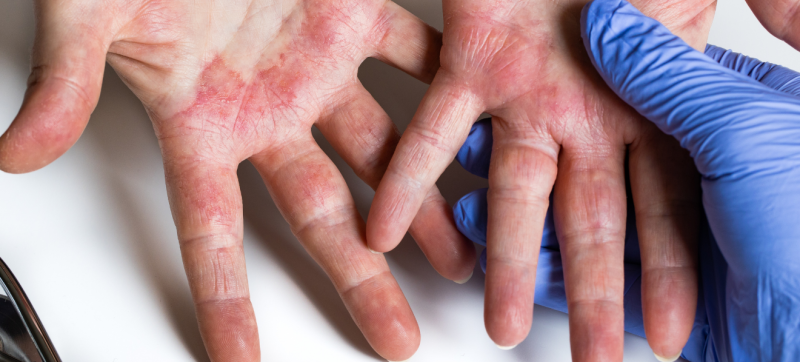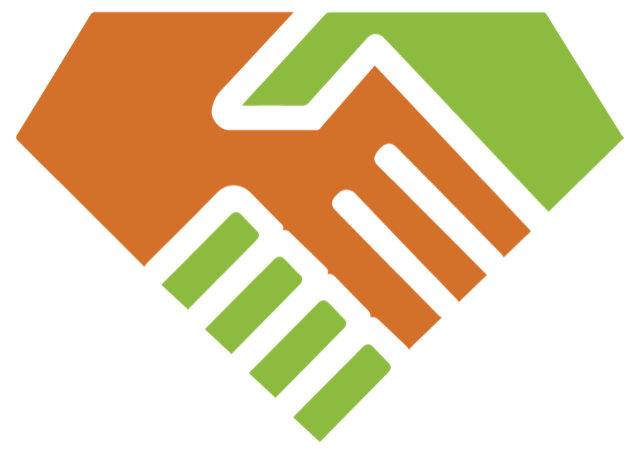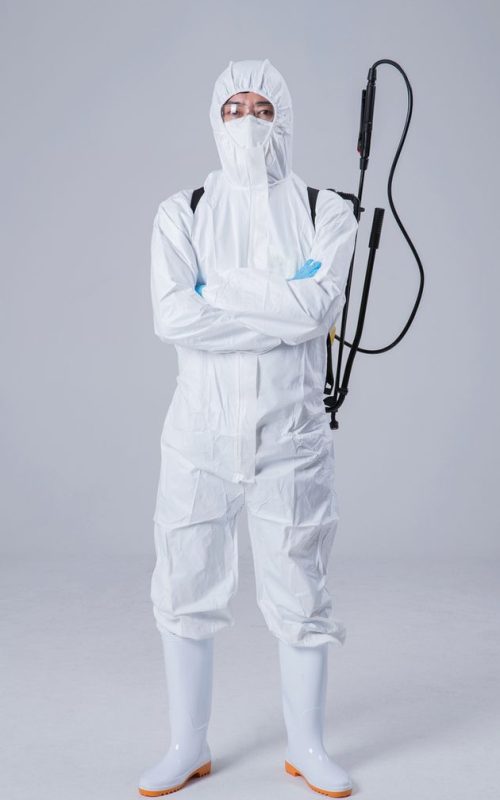What is PPE? Why is Personal Protective Equipment Important?
What is PPE?
PPE (Personal Protective Equipment) consists of protective gear that helps workers avoid health and safety risks in hazardous environments. PPE prevents direct exposure to chemicals, bacteria, viruses, dust, physical hazards, and other dangers.
PPE is not only used in the healthcare sector but is also widely utilized in industries such as manufacturing, construction, chemical processing, and food production.
Common Types of PPE:
- Medical masks, N95 respirators: Protect the respiratory system from bacteria, viruses, and fine dust.
- Protective gloves: Prevent direct contact with chemicals, bacteria, and sharp objects.
- Safety goggles: Shield the eyes from UV rays, dust, and chemicals.
- Protective clothing: Blocks harmful agents from the working environment.
- Helmets, anti-slip shoes: Protect the head and feet in dangerous workplaces.
The Importance of PPE in Health Protection
PPE helps safeguard individuals from various risks, such as:
- Exposure to hazardous chemicals in industrial settings.
- Infection from viruses and bacteria in medical environments.
- Physical injuries from impacts, slips, or sharp objects.
- Harmful effects of fine dust and toxic gases in manufacturing and construction.
During the COVID-19 pandemic, PPE became a crucial shield in protecting healthcare workers and communities from virus transmission. However, the widespread availability of unverified PPE and low-quality has posed serious risks to users.
What is Unverified PPE?
Definition of Unverified PPE
Unverified PPE refers to products that lack complete information about the manufacturer, origin, or quality certification, or show signs of being counterfeit.
These products typically have the following characteristics:
- Lack of proper labeling and manufacturer details.
- No certification from quality control organizations such as CE, FDA, ISO, or ASTM.
- Unusually low prices, with no warranty or clear return policy.
- Appearance similar to genuine products but with poor quality, failing to ensure effective protection.
Why Unverified PPE is Flooding the Market
The Surge in PPE Demand After COVID-19
Before the COVID-19 pandemic, PPE was mainly used in the healthcare, industrial, and construction sectors. However, as the pandemic spread, global demand for PPE skyrocketed, especially for face masks, medical gloves, and protective clothing.
Factors contributing to the prevalence of unverified PPE include:
- Supply shortages: Legitimate PPE manufacturers could not meet the sudden surge in demand.
- Consumer panic buying: Many people were willing to purchase any available product without checking its quality.
- Urgent procurement by governments and businesses: The rush to acquire PPE created opportunities for substandard products to enter the market.
According to an article published by The Guardian on March 1, 2025, titled “Five years on from the pandemic, how has Covid changed our world?”, the pandemic exposed vulnerabilities in global trade. The closure of Chinese factories led to PPE shortages, allowing individuals and businesses to exploit the situation by selling unverified and substandard PPE for quick profits.
Huge Profits from Low-Quality PPE
Producing certified PPE requires strict inspection procedures, high-quality materials, and compliance with safety standards to ensure user protection. This results in higher production costs, making genuine PPE more expensive.
In contrast, unverified PPE:
- Uses cheap, non-compliant materials → lowers production costs.
- Skips quality inspections → saves time and money.
- Is sold at a much lower price than certified PPE → easily attracts cost-conscious buyers.
Examples:
- Counterfeit N95 masks may be made of regular fabric without NIOSH-certified filters but are still marketed with appealing packaging.
- Fake medical gloves are often produced with substandard materials, tear easily, and lack antibacterial properties like genuine ones.
Due to low production costs and high profit margins, many small, untrustworthy manufacturers have ramped up the production of unverified PPE solely for financial gain.
Challenges in Market Control and Regulation
Despite efforts by authorities to tighten control over unverified PPE, several loopholes remain:
Difficulties in Monitoring Imported Products
- Many unverified PPE shipments are imported without undergoing strict quality inspections.
- Some products are falsely labeled as “imported” or “internationally certified” but lack any legitimate certification.
Lack of Resources for Market Inspection
- Monitoring and eliminating unverified PPE requires significant time and resources, while these products continue to flood the market.
- Online marketplaces and social media platforms serve as unregulated distribution channels, making enforcement more difficult.
Consumer Awareness Gaps
- Many consumers purchase PPE without knowing how to verify its quality, making them susceptible to deceptive advertisements.
- Some businesses unknowingly import unverified PPE, trusting unreliable suppliers.
- These factors allowunverified PPE to infiltrate the market, making regulatory control more challenging.
The Rise of Online Markets – A Hotspot for Counterfeit PPE Distribution
The rapid growth of e-commerce and social media has made it easier than ever for unverified PPE to reach consumers.
Selling on Platforms like Facebook, Zalo, TikTok, Shopee, Lazada, etc.
- Many online shops advertise PPE at extremely low prices with attractive images but provide no manufacturer details.
- Consumers focus solely on price without checking for safety certifications.
- Once counterfeit products are exposed, many sellers shut down their stores, change names, and continue selling substandard PPE.
Lack of Warranty or Return Policies
- Customers purchasing PPE online often cannot inspect the product before receiving it.
- When buyers discover low-quality products, returning or exchanging them becomes difficult due to unclear seller addresses or outright refusal.
- The convenience of online shopping has fueled the spread of unverified PPE, making it increasingly difficult to regulate.
Consumer Preference for Cheap Products
One of the key reasons for the widespread availability of unverified PPE is consumers’ tendency to prioritize low prices.
Low Prices Always Attract Customers
- Certified PPE is often expensive, while counterfeit products can cost only one-third or half the price of genuine ones.
- Many individuals and businesses opt for cheaper PPE to save costs without considering the potential risks.
Lack of Knowledge About Certified PPE
- Many consumers are unaware that PPE must meet quality certifications such as CE, FDA, ISO, or NIOSH.
- Without proper verification, they unknowingly purchase counterfeit PPE.
User Negligence
- Some people assume that “all masks are the same” or that “any gloves will do,” leading them to ignore PPE quality.
- This mindset enables unverified PPE to persist and thrive in the market.
Potential Risks of Using Unverified PPE
Failure to Meet Safety Standards
Genuine PPE must comply with international safety standards such as ISO 13485, FDA, CE, or national regulations (e.g., TCVN in Vietnam). However, unverified PPE often:
- Does not meet any safety standards, lacks certification, and is not tested before being sold.
- Fails to provide the required level of protection.
- Tears easily, lacks waterproof properties, and does not effectively filter bacteria (in the case of masks).
Example:
At the beginning of the COVID-19 pandemic, the Netherlands had to recall 600,000 masks imported from China after discovering they did not meet safety standards. (Read more: Netherlands recalls ‘defective’ masks from China).
Negative Health Effects on Users

Skin irritation and infections: Fake or unverified PPE may contain harmful chemicals such as formaldehyde or industrial dyes, leading to allergic reactions or skin inflammation.
Ineffective protection against hazards: Substandard PPE cannot safeguard users from bacteria, viruses, toxic chemicals, or fine dust, increasing the risk of infections and workplace accidents.
Breathing difficulties and respiratory issues: Some non-certified masks are poorly ventilated, making it difficult to breathe or failing to filter fine dust, which negatively impacts respiratory health.
(Read more: 5 Critical Health Risks of Choosing the Wrong Protective Gear.)
Increased Risk of Infections in Medical Environments
In hospitals or laboratories, low-quality PPE can significantly increase the risk of cross-infection due to:
- Non-standard masks that lack proper filtration layers and fail to block bacteria and viruses.
- Weak gloves that tear easily during use, exposing healthcare workers to infectious diseases.
- Non-waterproof protective clothing that fails to shield against hazardous fluids.
Example:
According to Deutsche Welle (DW), masks imported from China, despite being distributed to hospitals, were found to lack proper air filtration and sealing, increasing infection risks for healthcare workers. As a result, the Netherlands had to recall them to ensure the health and safety of medical personnel.
Fire and Occupational Safety Hazards
In industrial sectors, unverified and low-quality PPE can lead to serious consequences:
- Inferior gloves and safety shoes: Fail to prevent slips, burns, or electrical hazards.
- Non-compliant safety goggles: Do not provide adequate protection against chemicals or dust, potentially leading to corneal injuries.
- Weak protective clothing: Cannot withstand heat or chemical exposure, increasing the risk of severe burns or poisoning.
Economic Losses for Consumers and Legal Risks for Businesses
Purchasing unusable products: Consumers who buy non-compliant PPE may need to repurchase frequently, leading to increased costs.
Financial damage to businesses: Companies using unverified, non-certified PPE may face fines for violating workplace safety regulations or even lawsuits if accidents occur.
Reputation damage: If partners or customers discover that a business is distributing low-quality PPE, it can severely impact the company’s brand image and credibility.
How to Identify and Choose Certified PPE
Check Product Origin and Safety Certifications
One of the most important factors in ensuring PPE quality is verifying its origin and certification from reputable health organizations.
Purchase PPE from trusted suppliers with valid business licenses. Avoid buying from unknown sources, especially low-priced products sold online without quality verification.
Check for quality certifications. Standard-compliant PPE is usually certified by the following organizations:
- CE (Conformité Européenne – Europe): PPE standards for the European market.
- FDA (Food and Drug Administration – USA): Ensures PPE meets safety requirements in the U.S.
- ISO (International Organization for Standardization): International quality standards for PPE.
- ASTM (American Society for Testing and Materials – USA): U.S. standards for PPE testing.
- NIOSH (National Institute for Occupational Safety and Health – USA): Certifies N95 masks.
- GB2626-2006 or GB2626-2019 (China): Standard for KN95 masks.
If a product lacks any of these certifications, it is likely counterfeit or of poor quality.
Identifying the Technical Specifications of Certified PPE
Each type of PPE has specific quality standards, making it easier for consumers to recognize certified products.
Medical Masks and N95/FFP2 Masks
Surgical masks must meet EN 14683 (Europe) or ASTM F2100 (USA) standards and have at least three layers:
- Outer layer: Water-resistant.
- Middle layer: Bacterial filtration.
- Inner layer: Sweat-absorbing.
N95/FFP2/KN95 masks should have the following characteristics:
- Particle filtration down to 0.3 microns with ≥ 95% efficiency.
- Secure ear loops that fit snugly without gaps.
- No unpleasant odors, non-irritating to the skin.
Medical Gloves
- Made from nitrile, latex, or vinyl for durability and elasticity.
- Free of punctures, should not tear easily when stretched.
- No chemical odors or excess powder that could cause skin irritation.
Protective Clothing
- Made from polypropylene or non-woven fabric, water-resistant, and protects against droplets.
- Strong seams, resistant to tearing during movement.
- Premium versions may include chemical-resistant and anti-static layers.
Safety Goggles and Face Shields
- Made of transparent polycarbonate, fog-resistant, and scratch-proof.
- Close-fitting design to fully protect the eye area.
Choose a Reputable Supplier
Prioritize purchasing PPE from official distributors, hospitals, major pharmacies, or reputable safety equipment stores.
Avoid PPE from unverified sources, unusually cheap products, especially those sold on unregulated e-commerce platforms without quality assurance.
Check customer reviews before making an online purchase.
Inspect PPE Quality Before Buying and Using
Before using PPE, perform simple quality checks:
- For N95/FFP2 masks: Conduct a Fit Test by wearing the mask and exhaling forcefully. If you feel air leaking from the sides, the mask may not meet standards.
- For medical gloves: Lightly stretch the gloves to check if they tear easily.
- For protective clothing: Test water resistance by placing a few drops of water on the surface. If the water seeps through quickly, the clothing does not meet quality standards.
Conclusion
PPE plays a crucial role in protecting workers’ health and safety, especially in healthcare, industrial, and hazardous environments. However, the widespread availability of unverified, low-quality PPE poses a serious threat, compromising protection effectiveness and endangering users.
Choosing certified PPE not only helps prevent risks but also protects the community, curbs the spread of diseases, and reduces workplace accidents. To achieve this, consumers must thoroughly verify the product’s origin, quality certification, technical specifications, and purchase from reputable suppliers.
Stay vigilant against unverified PPE, as using low-quality products can have severe health and safety consequences. Investing in certified PPE is an investment in your safety, the safety of your community, and overall workplace and public health awareness.
Call to Action
Don’t let low-quality PPE compromise your protection and put you at risk.
- Only buy PPE from trusted suppliers with clear quality certifications.
- Carefully check labels, standards, and origins before using any PPE.
- Share this information to raise awareness in the community about the importance of certified PPE.
👉 Act now! Choose high-quality PPE and say NO to counterfeit or substandard products to ensure your safety and that of your loved ones!
👉 Contact TM&DV 8688 COMPANY LIMITED, Vietnam’s leading PPE manufacturer, for consultation and access to internationally certified protective equipment. We are committed to providing high-standard, thoroughly tested protective gear to keep you safe in all working environments.

